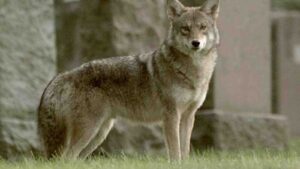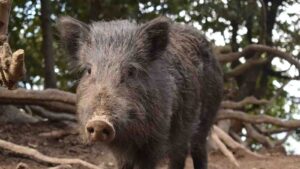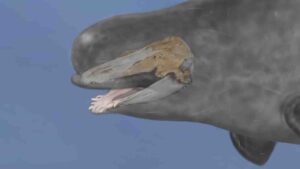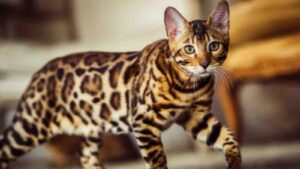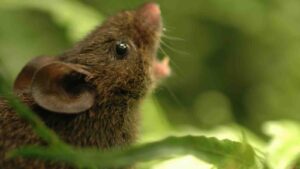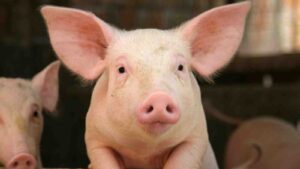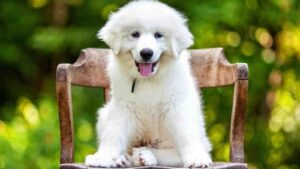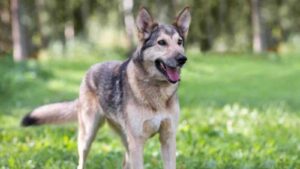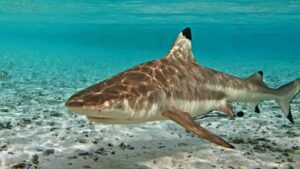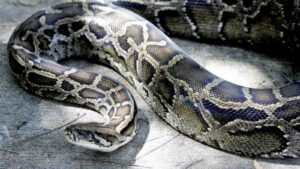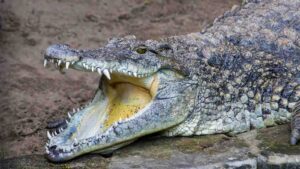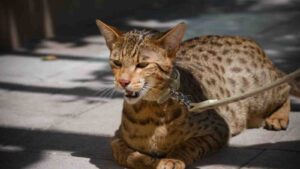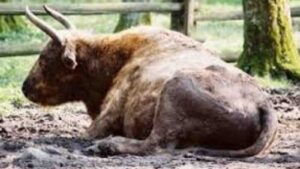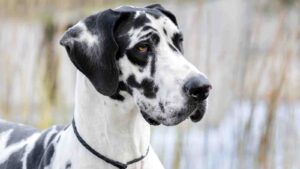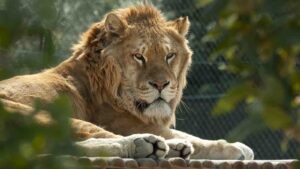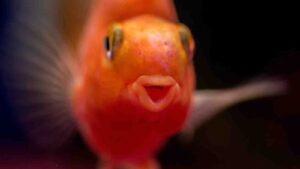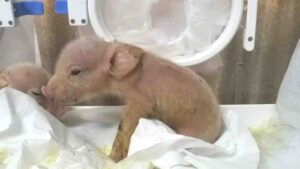TERRIFYING HYBRID ANIMALS YOU WILL SEE FOR THE FIRST TIME
Summary
ULTIMATE FACT PRESENTS TOP 20 TERRIFYING HYBRID ANIMALS YOU WILL SEE FOR THE FIRST TIME. Before we begin, click that like button to inspire us; moreover, subscribe to our channel and click the notification bell to be inspired by this […]

ULTIMATE FACT PRESENTS TOP 20 TERRIFYING HYBRID ANIMALS YOU WILL SEE FOR THE FIRST TIME. Before we begin, click that like button to inspire us; moreover, subscribe to our channel and click the notification bell to be inspired by this type of ultimate fact.
We all can imagine and name a few hybrid animals that were created by scientists. These days, the internet is full of photo-shopped images of strange mixtures of animal creatures. Though the rare kind of crossing does not usually appear in nature, with the intervention of humans, these recently created creatures can boost up your knowledge. We have this list full of absolutely terrifying animals, which will give you goosebumps for sure.
Video: TERRIFYING HYBRID ANIMALS YOU WILL SEE FOR THE FIRST TIME
Coywolf :
The coyote wolf is a coyote wolf hybrid found throughout eastern North America, from Canada south to Virginia. The animals are now expanding throughout eastern North America.
Researchers believe coy wolves first got their start at the southern end of Ontario, in Canada’s Algonquin Provincial Park in the early 20th century, when colonizing coyotes from the west bred with remnant populations of eastern wolves or a subspecies of gray wolves.
They also have larger, stronger jaws and bigger skulls, which allow them to better hunt the plentiful white-tailed deer, and they can adapt to all habitats.
Video: TERRIFYING HYBRID ANIMALS YOU WILL SEE FOR THE FIRST TIME
Boar Pig:
Also called iron-aged pigs are a distinctive-looking crossbreed first developed for a BBC documentary by none other than Countryfile presenter Adam Henson’s father, Joe.
The main benefit of the breed is that you can produce the distinctive gamey pork without the need for a dangerous animal license.
They are slower-growing than many more modern breeds and tend to be lean and leggy, so they can take as long as 18 months to reach slaughter weight, with 8 to 9 months being a minimum. This is worth bearing in mind as boars are sexually active quite early when other breeds would be due for processing. Females are generally docile.
Narluga:
As they’ve called it, it’s the offspring of a female narwhal and a male beluga, two species that have never been known to mate before, the researchers write in Scientific Reports.
Even under normal circumstances, scientists know very little about the sex lives of belugas and narwhals. Both creatures spend a good portion of their year hidden in densely packed sea ice, which makes it tough for people to observe the animals and learn their secrets.
This unicorn of the sea will soon take over the world’s oceans; it’s possible such an adaptation might someday be an advantage, especially if declining fish stock and shrinking sea ice force both narwhals and belugas to adapt to new habitats.
Bengal Cat:
One of the cat lovers who helped the Bengal get its start was geneticist Willard Centerwall, who began crossing domestic and leopard cats.
Today, you can find Bengals in a number of different colors and patterns. They can be pointed and vaguely arrow-shaped or circular with a donut-like flair.
Underneath their showy coats, Bengals tend to have muscular physiques. According to the Cat Fancier’s Association, the hind legs are a bit taller than the shoulders. Adult Bengals weigh about 8 to 15 pounds.
Akita:
They aren’t the biggest dogs in the world; most weigh about 90 to 100 pounds. However, the combination of their large head and shoulders forward posture can make them look quite menacing.
Akitas are instinctually driven to guard and protect their families. In fact, this is one of the primary purposes for which the breed was developed—protecting nobles and other VIPs during the feudal period of Japan (they were also used to hunt large game, such as boar).
Despite their fearless and sometimes confrontational demeanor, they are often loving family pets. However, they are not one of the easier breeds to train, so they are not a good choice for inexperienced owners. They need consistent, firm, respectful training and regular socialization from an early age.
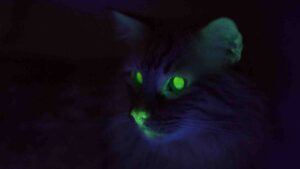
©theverge.com
Glow Cats:
Cats that have been genetically modified to glow in the dark are being used to gain insights into Aids.The scientist’s inserted one gene into the cats that helps them resist the feline form of Aids.
They also inserted a gene that produces a fluorescent protein called GFP. This protein, which is produced naturally in jellyfish, is commonly used in this area of research to monitor the activity of altered genes.
In both humans and cats, proteins called restriction factors that normally fight off viral infections are defenseless against HIV and FIV because the viruses have evolved potent counter weapons.
Singing Mice:
High in the mountains of Central America lives a little known creature called Alston’s singing mouse.
Singing mice sometimes belt out a song when they’re alone, but they’re especially vocal when other mice are around. Males sing as a way to fight over territory with other males, and both males and females sing to one another during courtship.
The researchers also injected nerve-blocking drugs into this brain patch and then played a recording of another male. Drugged males often failed to sing back. And when they did, they were slow to begin, taking seconds to start their own song.
Be aware to turn your volume up while listening to any song; they might lip-sing around.
Human Pig:
Scientists have created a human pig hybrid in a milestone study that raises the prospect of being able to grow human organs inside animals for use in transplants.
In the future, the approach could pave the way for incubating human organs, genetically matched to a patient, for use in transplants or for testing new medicines more safely and effectively.
Scientists are hoping to boost the human contribution by switching off specific genes in the pig embryos that would prevent the pig cells from contributing to target organs, such as the heart, potentially giving the human cells a competitive advantage.
This is the first combined human cells with those of a large mammal.
Great Pyrenees:
One unusual, somewhat paradoxical breed grows very large and is quite protective of their home and pack, but they look like big teddy bears. They’re coated in long, fluffy hair, and they have roundish faces with cute ears.
They can be quite intimidating, especially to those who are not comfortable with dogs. Great Pyrenees were originally developed to guard sheep and other livestock; that’s part of the reason for their fluffy appearance.
One of the gentlest breeds, but they aren’t a good choice for all owners. For example, they do not adapt well to apartment life, and they are Olympic-caliber shedders. They can also be somewhat difficult to train and a bit stubborn.
Gerberian Shepsky:
They are pretty gigantic when compared to the Siberian husky and can grow to weigh up to 90 pounds.
They’re actually relatively small in comparison to their other parent breed, the German shepherd.
Usually, a Shepsky’s personality will either favor their Husky parent or their German shepherd parent, and this can show up as unwavering devotion and affection for Husky dominance and intelligence and loyalty for German shepherd dominance.
Black Tip Sharks:
Scientists have identified the first-ever hybrid shark off the coast of Australia. The Australian blacktip shark is found from Thevenard Island in Western Australia to Sydney in New South Wales.
One of the most economically important sharks off northern Australia. It was historically fished for its meat and fins by a Taiwanese gillnet fishery, which began operating off northern Australia in 1974. The annual catch initially averaged around 25,000 tons, with approximately 70% consisting of Australian blacktip sharks, spottail sharks, and longtail tuna.
The fishery became uneconomical when Australia restricted gillnet lengths to 2.5 km in May 1986. At the end of the fishery, Australian blacktip shark numbers were estimated to have been diminished by around 50%.
Python Hybrid:
News of a hybrid super predator slithering its way through the waterways of the 1.5-acre wilderness, a genetically blended python that researchers believe might be able to better embrace the subtropical environment and expand its range more rapidly than any species before it.
Bringing two strong, different traits together, and sometimes the best of those traits will be selected in the offspring. That allows for the best of both worlds in the Everglades; it helps them to adapt to this new ecosystem potentially more rapidly.
Cuban Crocodile:
Mating Cuban crocodiles and American crocodiles are creating hybrid offspring that threaten the survival of the Cuban species, which has dwindled to about 4,000 wild animals in two isolated Cuban swamps.
The animals have increasingly moved into the Cuban crocodile’s remaining freshwater habitat as it becomes more brackish or salty due to agricultural activities.
American crocodiles living in Cuba are more closely related to Cuban crocodiles than to other American crocodile populations in Central America.
The scientists haven’t done behavioral studies to find out if the hybrids are stronger or more aggressive, which can sometimes happen when species interbreed.
Ashera:
The world’s newest, rarest, and most exotic domestic cat. The breed was developed by crossbreeding with two exotic wild species, the African Serval and the Asian Leopard cat, and then adding a dash of domestic cat into the mix.
The result is certainly a beautiful cat with leopard-like spots and contrasting stripes and elegant, well-formed features with large pointed ears that can stand 4 feet tall on its hind legs.
They like to climb and are very playful, which is probably not good news for the curtains. Weighing a mere 30 pounds, it will deter mice, small dogs, or annoying ex-partners from hanging around your home. If you have any other cats on the premises, they probably won’t be too thrilled either.
Bovid Hybrid:
American bison and European bison have been hybridized with domestic cattle.
This was originally done in an attempt to reinvigorate the declining wisent population. First-generation hybrid males are sterile, but females may be crossed back to either a wisent or domestic bull to produce fertile males. Modern wisent herds keep hybrids well isolated from pure wisent.
Since the modern purebred wisent are descended from less than 2 dozen individuals, this has resulted in a significant genetic bottleneck for the purebred wisent.
Humanzee:
Two Chinese scientists from Shenyang have claimed that they participated in an experiment in which they successfully impregnated a female chimpanzee with human sperm. Their goal was to create a new, more highly evolved chimpanzee with a larger brain and a wider mouth. Ultimately, they hoped that their new creature would be able to speak. The humanzee wasn’t exactly going to be treated well. Their plan was to use it as a slave by making it drive carts and herd sheep. They also wanted to send it off on experiments in space. The project fell apart because of the Cultural Revolution. Zealous revolutionaries smashed their lab and destroyed their work, and the chimpanzee died before she could come to term. The researchers claim that she was already three months pregnant.
Great Dane:
Absolutely huge dogs who are able to intimidate many people by virtue of their imposing appearance alone. They may look frightening, but they are typically gentle, affectionate, and loving with their families.
Despite their warm and fuzzy personalities, they require proper training and socialization from an early age. Failing to do so can actually be dangerous, given the size of these immense beasts. Because of this, they are rarely appropriate for first-time owners or those who lack the desire to engage in a proper training regimen.
Read More: Craziest Animal Created By Scientist
Panthera Hybrid:
A crossbreed between any of four species of tiger, lion, jaguar, and leopard in captivity. Most hybrids would not be perpetuated in the wild, as males are usually infertile.
They have huge teeth, about two inches long. Their genes include the genetic components of tigers and lions; therefore, they may be very similar to tigers and lions and can be difficult to identify.
Their coloring ranges from gold to brown to white, and they may have or not have spots or stripes. An adult male panthera usually has a smaller mane than a male one.
Blood parrot ciclid:
This cichlid hybrid was created in Taiwan around 1986 and is produced by cross-breeding a Midas cichlid with a Redhead cichlid or a Red Devil cichlid.
There is some controversy in the ethics when it comes to creating blood parrot cichlids, as they have several anatomical deformities, such as their mouth, which is only a small vertical opening and causes some to have difficulty feeding.
They are usually bright orange, but their color can vary to include red and yellow. Female blood parrots are usually fertile, whereas males are usually infertile, but there have been cases of successful breeding.
Read More: 20 People with Extra Body Parts You Won’t Believe Exist
Monkey Pig Hybrids:
Chinese scientists have successfully bred monkey-pig hybrids as part of research into the growth of human organs for transplantation in animals.
A team from the State Key Laboratory of Stem Cell and Reproductive Biology in Beijing genetically modified monkey cells to produce a fluorescent protein, allowing the researchers to track the cells and descendant cells.
These modified cells were injected into the pig embryos five days after fertilization for research purposes.
Which one did you find the most terrifying? Don’t forget to let us know in the comment section.
That is all for now. Like always, if you enjoyed it, be sure to give us a big thumbs up. To keep up-to-date with all of our awesome videos, be sure to hit subscribe and turn your notifications on to never miss a thing. Until next time, do take good care of yourself.
